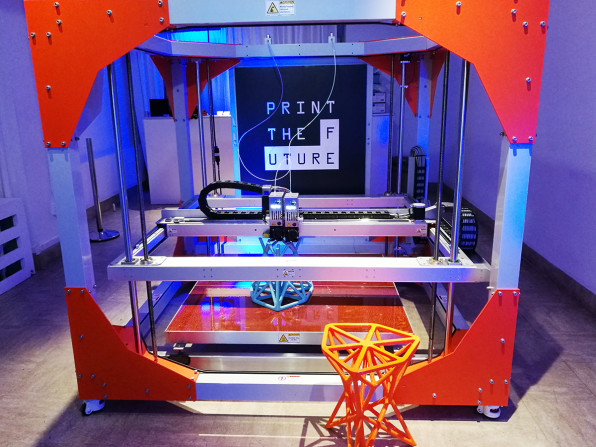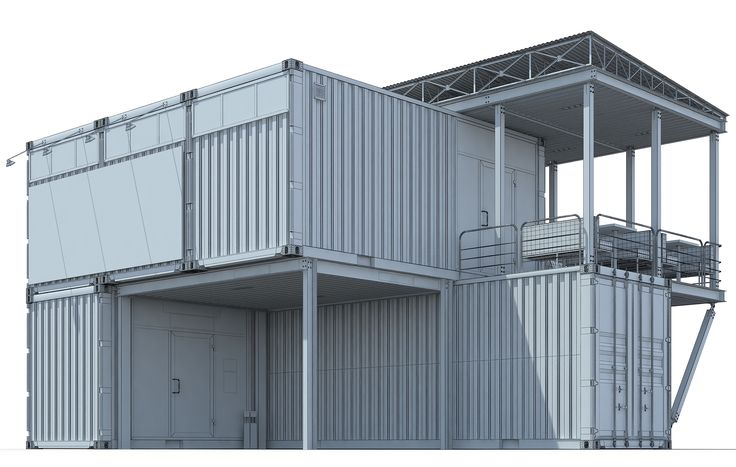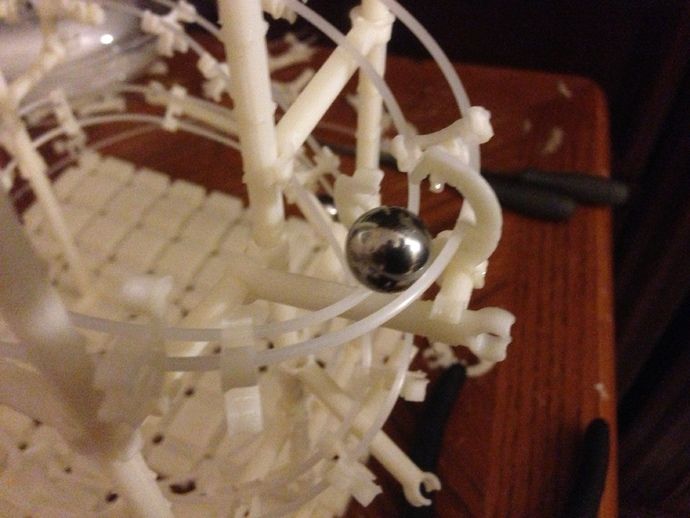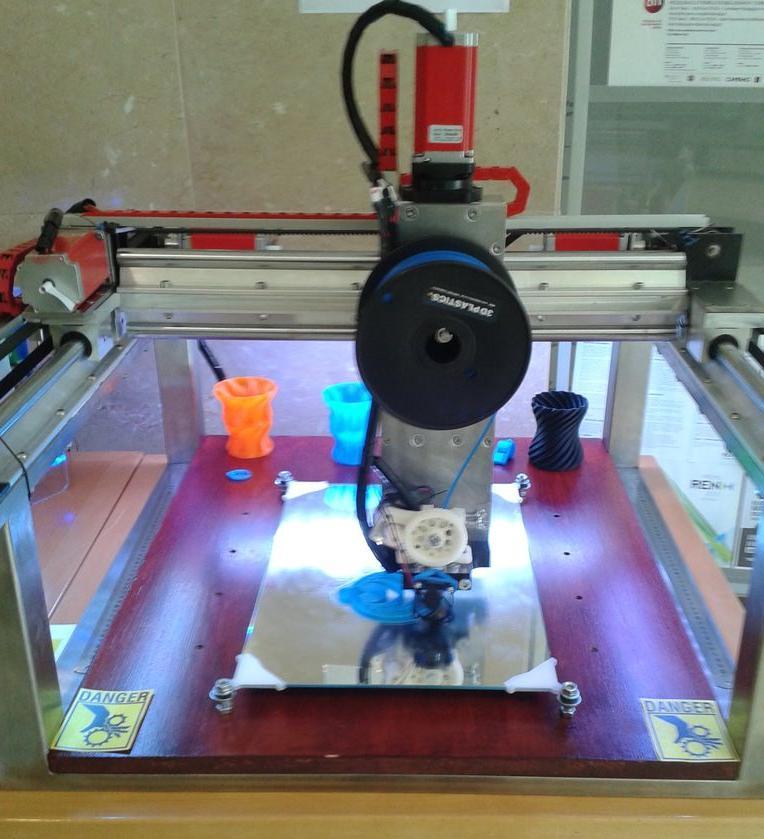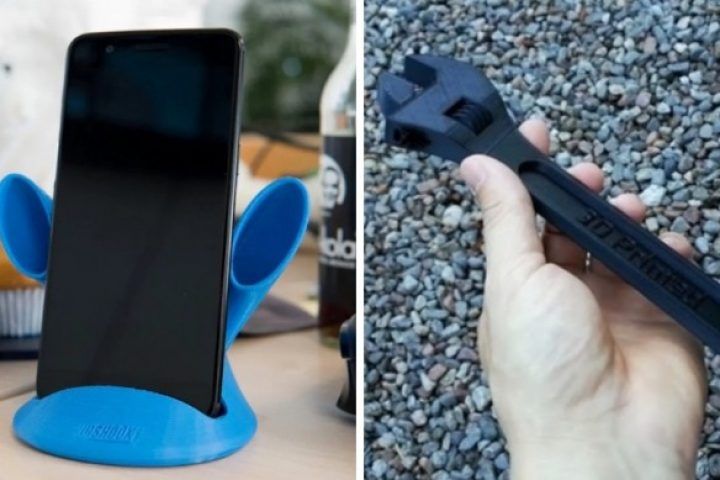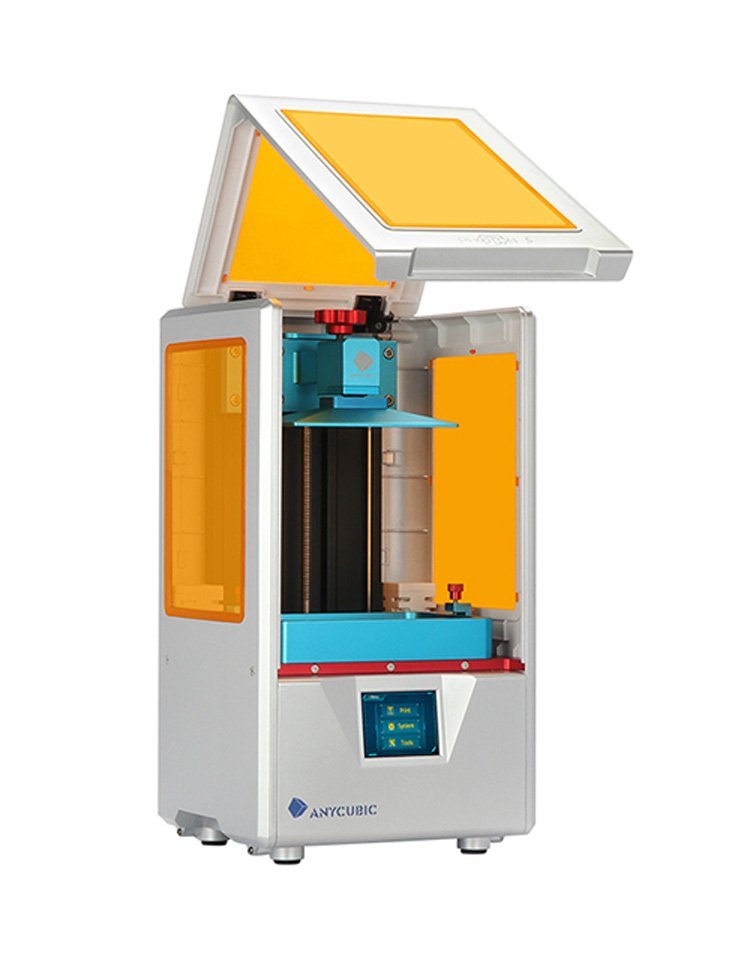3D printer trends
The most important 3D printing trends
About ten years ago, many leading analyst firms predicted that 3D printers would be standing in virtually every household by 2020. Now we know that these predictions have little to do with the reality around us, and 3D printing has remained an industrial technology. However, this does not mean that its development has stopped. On the contrary, according to a 3D Printing Market Size, Share & Trends Analysis Report, "The global 3D printing market size was valued at USD 13.78 billion in 2020 and is expected to expand at a compound annual growth rate (CAGR) of 21.0% from 2021 to 2028." Let's take a closer look at the most interesting 3D printing trends and applications of this technology in different sectors.
The most interesting 3D printing market trends
3D printing technology is becoming increasingly popular. It is therefore worth taking a look at the most interesting trends to better understand what the future of 3D printing is.
3D printing trends: Printed skin
For over 20 years, scientists have been working to develop technology that would help them grow human skin or tissue that could replace it. One of the primary applications of such skin would, of course, be transplants for victims of burns, accidents, people with badly healing wounds or dermatological problems. It turns out that 3D technology, which has made it possible to print human skin, comes to the rescue. Already, skin manufactured this way is revolutionising the cosmetics industry and reducing the amount of cosmetics tested on animals. This trend is expected to grow significantly in the coming years.
3D-printed houses
3D Printing applications have become a strong trend in the building industry, designing the „house of the future”. 3D printed houses are fully functional buildings, featuring electricity, water, telecommunications and air-conditioning systems. This could be one way to satisfy the ever-increasing demand for small, individual apartments and houses. A 3D printer for concrete prints walls and the entire house layer by layer in a 24/7 operation. All it needs is the support of a few construction workers. This reduces labor costs by 50 % to 80 % and construction waste by 30 % to 60 %. It is flexible, it can be easily modified or adjusted to customer needs and it only takes 20 % of the time of a building a comparable conventional house!
A 3D printer for concrete prints walls and the entire house layer by layer in a 24/7 operation. All it needs is the support of a few construction workers. This reduces labor costs by 50 % to 80 % and construction waste by 30 % to 60 %. It is flexible, it can be easily modified or adjusted to customer needs and it only takes 20 % of the time of a building a comparable conventional house!
Repurposing plastic
It turns out that 3D printing also strongly supports the zero waste attitude. After all, its very idea is based on zero-waste production – whatever is made is made to measure, there is no waste and not even matrices are needed. But how sustainable are the materials used for 3D printing? Today it is possible to transform plastic waste into filament suitable for 3D printers, so a circular production can be established with the help of 3D printing.
4D Printing
It is worth explaining what 4D printing actually is, as its name can be somewhat misleading. This technology involves the use of materials for printing, which after printing and the application of an appropriate stimulus (e.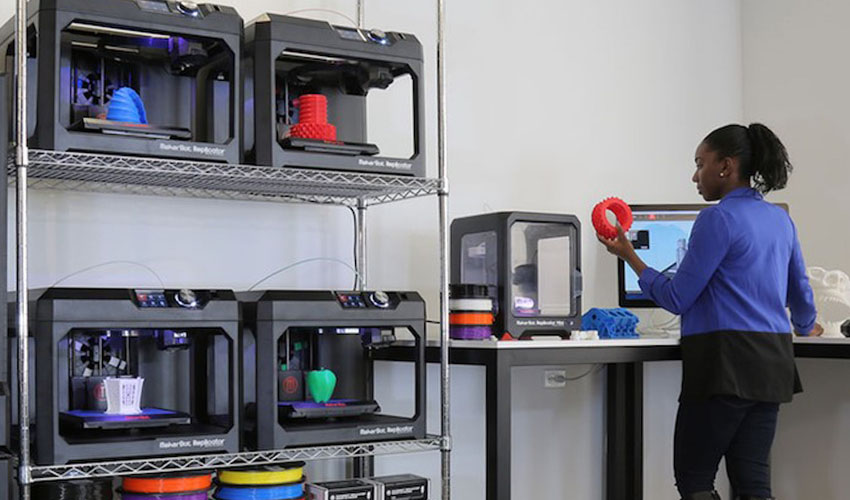 g. temperature) can change shape. Currently, 4D printing is mainly used for visual purposes, but it is easy to imagine its future use, for example in medicine (transplantation), construction (to build pipelines), or robotics.
g. temperature) can change shape. Currently, 4D printing is mainly used for visual purposes, but it is easy to imagine its future use, for example in medicine (transplantation), construction (to build pipelines), or robotics.
3D printing trends and the COVID-19 pandemic
3D printing has helped us in dealing with the pandemic. Thanks to 3D printers, we were able to meet the needs of hospitals and medical staff at critical moments. Among other things, the technology helped to speed up the production of face shields or complex ventilator components. In the UK and Israel, for example, protective masks were 3D printed. We all remember the situation when a hospital was built in Wuhan, China, in only 2 weeks with the help of 3D printed materials. Shortly afterward, fifteen isolation rooms for medical staff and people infected with COVID-19 were built in the city of Xianning.
Last but not least, the pandemic has made many companies realise how important it is to not depend on a complex and long supply chain.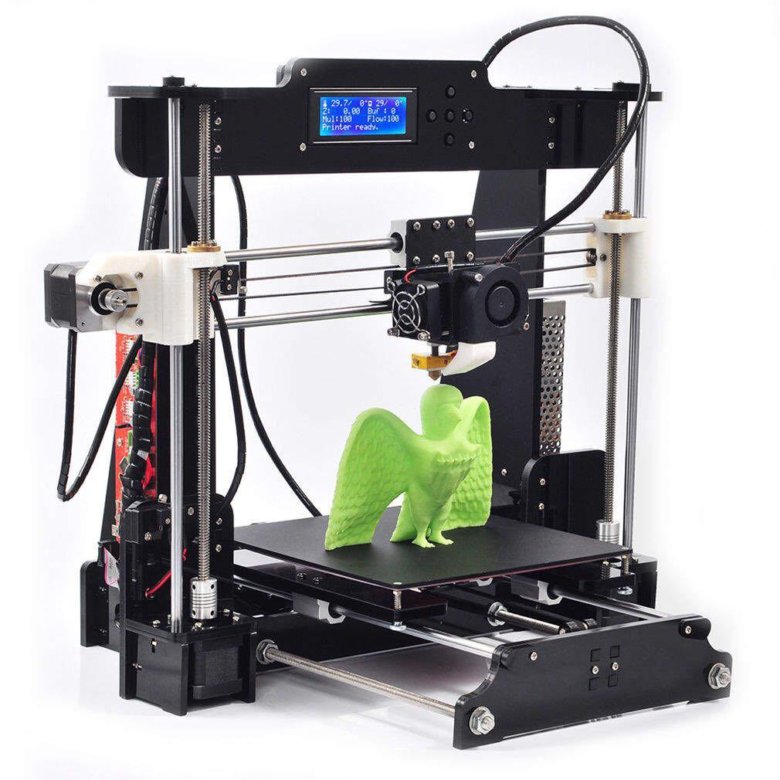 3D printing is an obvious ally in this case.
3D printing is an obvious ally in this case.
Find out more about the ALSO 3D Printing Solution .
A Year of Radical Renewal
With this being said, the legacy of 3D printing starts in 2021 with three key trends: going back to the drawing board to rethink manufacturing; enabling the personalization of not only products, but also 3D printers themselves; and creating new solutions, fast.
This is not the first time the world has seen this opportunity for change. Apple introduced the iPod right when the dotcom bubble burst. Airbnb came to life during the financial crisis of 2008, and Alibaba launched its online marketplace at the height of the SARS epidemic in 2003.
“In this time of great flux, we must dare to take bold steps and discard what is not future-proof. We need to harness the core values of technologies like additive manufacturing (AM) to move towards new ways of thinking and doing that have meaningful impact,” says Fried Vancraen, Materialise CEO and Founder.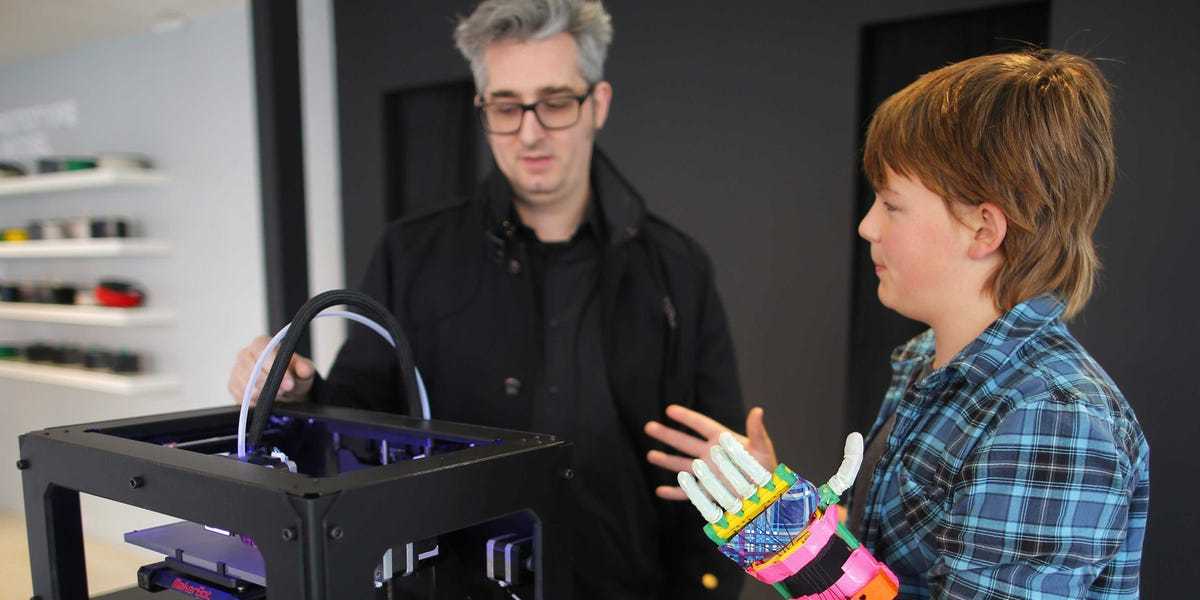
We believe that additive manufacturing is meaningful when it empowers people to make better choices. The COVID-19 crisis has shown that AM can step up and provide meaningful solutions to emerging challenges. But so far, these solutions have not truly played to the strengths of the technology. The value of AM lies in being able to create things that no other manufacturing method can.
AM’s ability to customize, to print with fewer components and with less waste, means that it can ensure solutions that are socially inclusive and that operate with sustainability at their core. The key to a strong legacy for our industry is to continue finding meaningful applications that take advantage of these qualities and to bring a greater awareness to all that AM has to offer.
Our medical engineers worked together with doctors to create the Materialise Passive NIP by designing a 3D-printed connector that holds together standard medical equipment.
In the short-term, we are still locked into the COVID crisis, but the trends we foresee in the coming year look to successfully take us to the other side of this stronger and more flexible, and ready for possibilities where 3D-printed products or components bring more value.
Let’s not forget that this value is often created at the beginning of the chain, in the digital capturing of the essential customer data and requirements. At the end of the chain, the 3D printing packages this value into a product. Let’s rethink value chains as Apple, Airbnb or Alibaba did.
As Fried put it, “As companies realize that they need to do things differently, AM empowers them to make a difference. And in this way the legacy of AM will not be what it allows us to make, but what it makes possible.”
1. Back to the Drawing Board
Everywhere around us, the COVID-19 crisis is turbo-boosting digitization. At the same time, the climate crisis continues to press upon us a sense of urgency to reconsider the status quo of our economic and industrial systems. The continued emergence of such extreme crises means that we can no longer continue the way things have been going. We need to dramatically rethink the way industries operate and how we develop solutions to new challenges.
The pressures of these types of existential threats demand more than just incremental steps forward. Incremental processes of innovation also leave little room for revolutionary technologies like AM to make an impact. But by allowing ourselves to completely rethink how we approach solutions, we open the door to radical new designs and innovative processes, something AM is naturally designed to do.
Take Airbus, for example. They recently revealed plans to accelerate the development of hydrogen-powered commercial jets and skip over the development of hybrid engines entirely. This bold jump means that by 2035, the world could see the first zero-emission, climate-neutral aircraft. Technologies like AM can play a big part in realizing these types of innovative concepts.
More than anything that came before, global crises are incentivizing industries to fast-track their technological innovation, and this climate of radical reinvention represents an opportunity for AM to really become instrumental in the areas of design and manufacturing.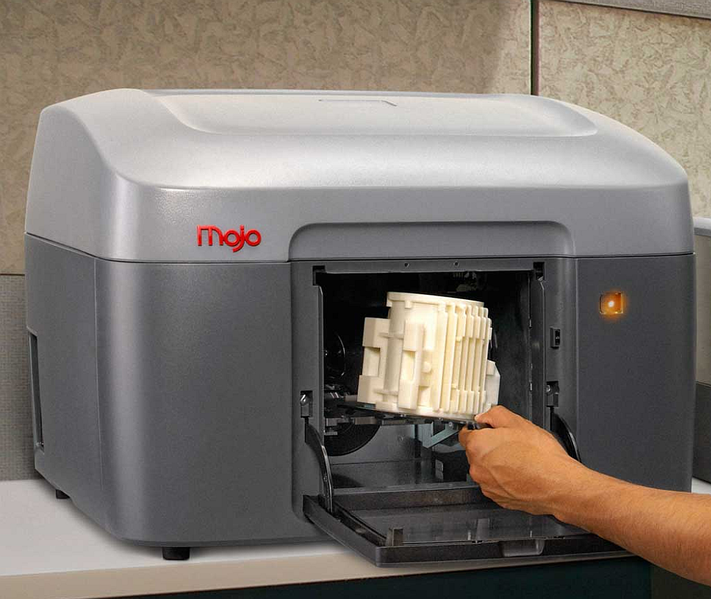
— Fried Vancraen, Materialise CEO and Founder
According to Materialise CTO Bart Van der Schueren: “AM frees designers from the constraints and limitations of traditional manufacturing technologies, helping them to focus on the solution instead of the product. As a result, AM allows us to create performance, weight-saving, time and cost advantages. Until now, AM has really only been able to demonstrate its potential. Now it gets the chance to actually do it.”
Starting fresh doesn’t mean starting from nothing. By going back to the drawing board, we create freedom to give new technologies a chance. To unleash new perspectives and possibilities. Then, the only limit to the change we can create, is our imagination.
2. Personalizing the Process
“It is generally known and accepted that a unique and distinguishing characteristic of 3D printing is that it significantly reduces the cost of customization of products. What is less known and often overlooked is the importance of empowering engineers and operators to also personalize and optimize the printing process as such,” says Materialise’s Executive Chairman, Peter Leys.
Why is customization of the process so important? Is the ideal AM world not a world where the operator simply pushes the start button and then prints whatever product that needs to be printed based on a pre-installed set of parameters that comes with the machine?
Well, the illusion of a world where one standard printing process fits all applications is wrong, short-sighted and, last but not least, dangerously boring.
First, it is wrong because 3D printing is such a flexible technology that its potential would by definition be under-used if only a few standard processes would be deployed regardless of the product that is being manufactured. If you want to use additive manufacturing to its fullest extent, then you have to tweak each and every parameter of the machine and the process to the specific product that you intend to print. In a prototyping context, this possibility and need was less crucial as the efforts to adapt the process to a particular product could only be depreciated over, at best, a very small batch of products. As AM is more and more used for mass production, the need to come up with the most optimal process for a particular product obviously becomes more and more relevant.
If you want to use additive manufacturing to its fullest extent, then you have to tweak each and every parameter of the machine and the process to the specific product that you intend to print. In a prototyping context, this possibility and need was less crucial as the efforts to adapt the process to a particular product could only be depreciated over, at best, a very small batch of products. As AM is more and more used for mass production, the need to come up with the most optimal process for a particular product obviously becomes more and more relevant.
Second, the one-process-fits-all-products philosophy is short-sighted, because it completely overlooks the fact that personalization and localization go hand-in-hand. Or to put it differently: 3D printers can only be deployed in a distributed manufacturing setting, if the local operators have the freedom and ability to adjust the process to their local reality. Typically, the primary parameters would be set centrally and then more specific secondary parameters would be adjusted by the engineers in their respective locations to meet their local needs.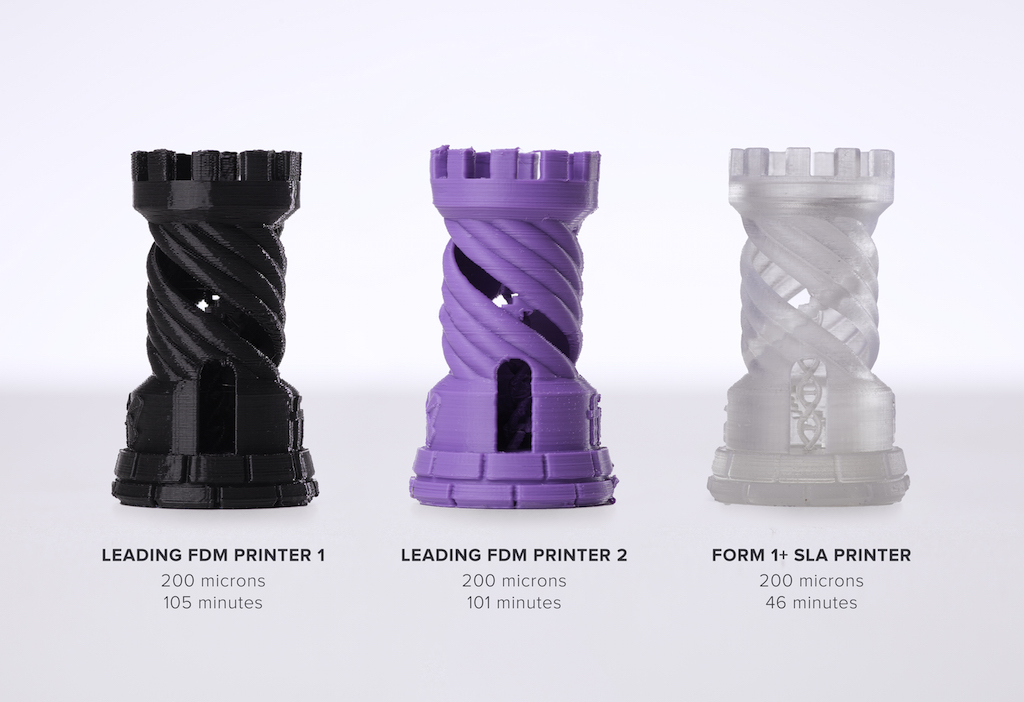
“The importance of empowering engineers and operators to also personalize and optimize the printing process is often overlooked,” says Materialise’s Executive Chairman, Peter Leys.
Finally, a world where an operator cannot contribute the added value of their knowledge and expertise to the printing process would be a dull push-the-start-button world. The world of standard processes would not only be boring; it would also be dangerous, because it would be a world with less competition as 3D printing facilities would not be able to distinguish themselves from other operators by adding their personal expertise and experience to the process. And lack of competition means, at the end of the day, lack of innovation.
So, the more operators are empowered to fine-tune, optimize and personalize the 3D printing process, the more the value of 3D printing will be unleashed. Yes, 3D printing should become faster, cheaper and more reliable. But to get there, 3D printing should also, and foremost, become more and more personal.
3. No Time to Waste
Materialise Vice President for Medical, Brigitte de Vet says, “COVID-19 has launched the world into a state of constant urgency. Healthcare professionals as well as regular consumers have been confronted with shortages and quality issues for both essential medical products and everyday consumer goods, a consequence of a global market model that hinges on centralized, mass-manufacturing. Things we used to take for granted are no longer necessarily available or even appropriate, and new solutions need to be developed fast.”
Digitization is accelerating in every area as companies are investing in technologies that can help them adapt to this new normal of filling supply gaps, remote work and local solutions. But as part of this adoption, they need to make choices, and they will choose based on risk, cost and quick return on investment (ROI).
AM is one of those digital technologies that can deliver short-term ROI, low-cost manufacturing, and low risk, but the entry point has typically come with a lengthy learning curve.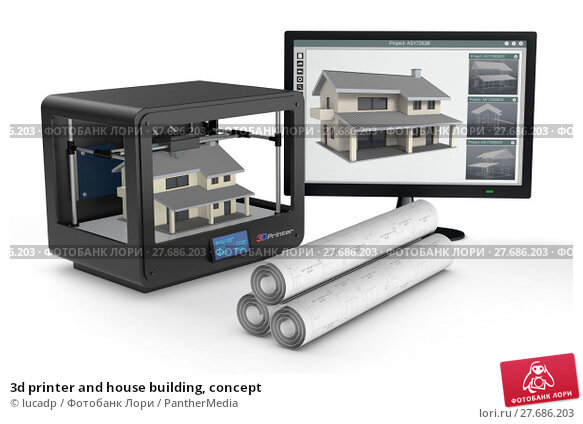 Some companies started the AM adoption process ten years ago and are well-positioned to make greater shifts to the technology, but companies new to AM no longer have the luxury of time.
Some companies started the AM adoption process ten years ago and are well-positioned to make greater shifts to the technology, but companies new to AM no longer have the luxury of time.
Consultancy services can help guide businesses on their paths to AM success.
Brigitte continues, “As a result, we see a growing trend for services that guide companies along this path. We see this for example in the medical world, where the value of personalized medicine is well known, but there is a low tolerance for uncertainty. New solutions need to offer strong evidence that they are safe and effective and can deliver a high-quality standard of care. Consultancy services can help minimize the risk of such big investments and accelerate the timelines by sharing their expert knowledge of what the technology can and can’t do, and the right manufacturing method needed for each unique case.”
main trends and expert forecasts
Analytics and business
Experts recommend
Author: Semen Popadyuk
Author: Semyon Popadyuk
What 3D printing trends do additive manufacturing experts think will be especially relevant in 2022?
3D Printing Industry, one of the leading online publications in the 3D industry, asked researchers, senior executives, technical experts and investors to share their vision for 3D printing this year.
The message is clear: the potential of 3D printing in various industries, including aerospace, automotive and medical, is still growing.
The pandemic has boosted the industry as weak links in the supply chain have been identified, advanced additive technologies have once again topped the agenda. Increasing demands on materials, as well as an increase in demand for higher performance materials, are evidence of manufacturers' confidence in 3D printing. At the same time, attention to the problems of sustainable development suggests that the industry keeps pace with the times.
The discussion touched upon trends such as consolidation, manufacturing, automation, the expansion of the manufacturing ecosystem (including post-processing), as well as advances in software such as digital threads, simulation, and the growing use of artificial intelligence.
Become a qualified 3D technician! The iQB Technologies Training Center offers courses on working with hardware and software products for preparing models for 3D printing and processing 3D scanning data
Bart Van der Schueren, CTO Materialize
Additive manufacturing has proven its worth for many different applications and business models. Over the past two years, due to supply problems, it has received special attention. This has accelerated the adoption of the technology, but at the same time poses challenges for users and the entire 3D industry as a whole. As the boundaries between traditional manufacturing and 3D printing disappear, the two ecosystems are beginning to merge and form a more integrated manufacturing environment.
Over the past two years, due to supply problems, it has received special attention. This has accelerated the adoption of the technology, but at the same time poses challenges for users and the entire 3D industry as a whole. As the boundaries between traditional manufacturing and 3D printing disappear, the two ecosystems are beginning to merge and form a more integrated manufacturing environment.
© Materialize
This digitized unified manufacturing environment allows for greater efficiency and repeatability, greater scale and control, but requires a common resource, namely data. Data will play an increasingly important role in 3D printing. It's not just about access to data, it's also about how organizations and users can collect, use and protect their own data.
Smart manufacturing is based on the ability to analyze data to form actionable strategies. They allow to improve and expand production and, as a result, create better products. Combining data from different processes and levels makes it possible to optimize and automate production.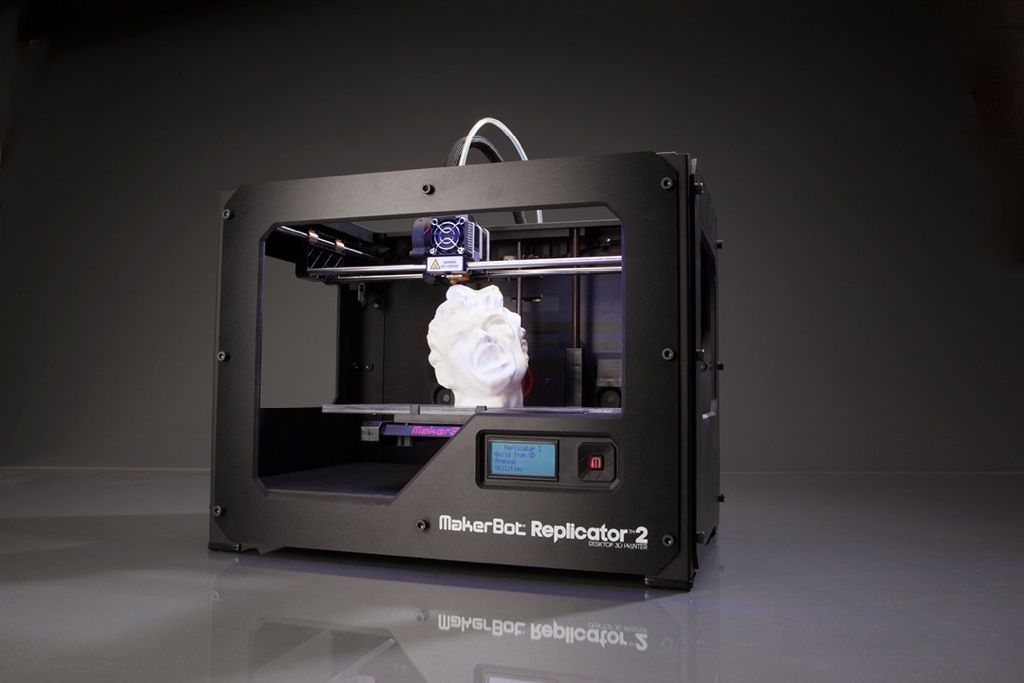 This requires an AM software platform that can connect to all systems and datasets in and out of the production environment.
This requires an AM software platform that can connect to all systems and datasets in and out of the production environment.
At the same time, organizations must be able to protect their intellectual property. In the case of additive processes, this is relevant both from the point of view of the design of parts and the process itself. With 3D printing, the material and product are created at the same time. Given this side of the issue, data is obviously more important in 3D printing than in traditional manufacturing.
But even in the presence of large amounts of data, optimization first requires knowledge of people in specific areas of specialization, and only then does it make sense to automate the process. In other words, if you're using a lot of data to automate and scale inefficient production, you still won't get good results. The main thing is to combine the right technology with the right experience.
Read more in the article Trend 2022: smart data is increasingly relevant for additive manufacturing
Brian Thompson, Vice President, CAD Division and General Manager, PTC
Design for Additive Manufacturing (DfAM) will continue to evolve and software will become a critical enabler for industrial additive manufacturing.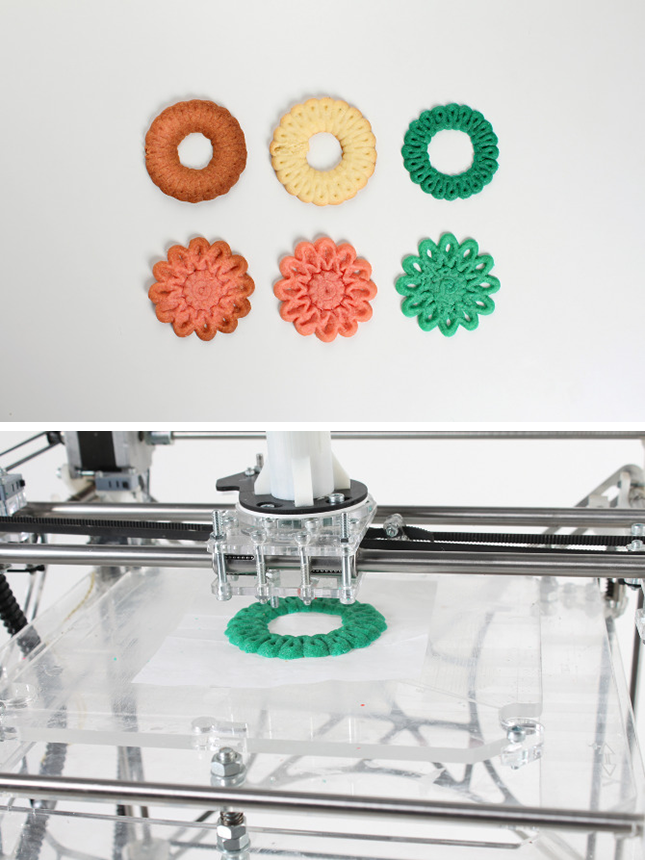 We will continue to overcome the fragmentation associated with point solutions and strive to create an interconnected ecosystem that combines hardware, software products and materials.
We will continue to overcome the fragmentation associated with point solutions and strive to create an interconnected ecosystem that combines hardware, software products and materials.
We expect an increase in activity and interest in the field of post-processing products printed on metal 3D printers. Now technologies are being actively developed that complement the printing process itself. This means that metal 3D printing technologies are becoming more mature, at least in a few niche markets.
Hybrid manufacturing (where the same machine performs both additive and subtractive processes) remains a hot topic, especially among manufacturers interested in combining a 3- and 5-axis milling machine with a 3D printer, which would eliminate the need for separate post-processing equipment.
We are already seeing great strides in predicting deformations in metal printing. However, there is also expected to be an increase in interest in modeling tools to address the strain problems inherent in polymer 3D printing. We are also looking forward to products that increase the predictability of resin printing.
We are also looking forward to products that increase the predictability of resin printing.
Download the free brochure 3D Plastic Printing: Technology and Applications
Finally, we anticipate an increasing focus on digital filament technology across the entire value chain, from concept to post-processing and quality control. In our practice, there was a demonstration project: it included not only an innovative heat exchanger (an achievement in itself) created using flagship CAD technologies, product lifecycle management and industrial Internet of things (order fulfillment and monitoring), but also augmented reality capabilities that allow “send” the part to a specialist anywhere in the world! By September 2022, it is unlikely that there will be manufacturers able to fully implement this practice, but this is what we are aiming for.
Avi Reichental, co-founder and CEO of Nexa3D
This year, the pandemic will continue to largely determine development trends.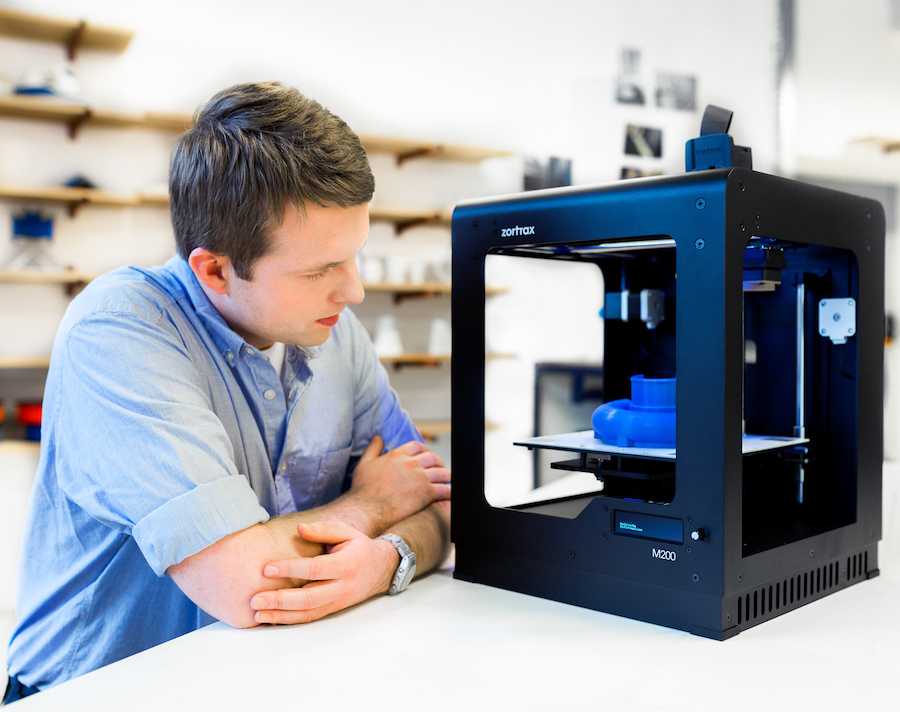 Over the past two years, weaknesses in a complex and fragile supply chain have been identified, which is a priority issue for most manufacturers. This forces them to accelerate the digitalization and localization of supplies. This is where 3D printing plays a key role, particularly in terms of speed, throughput, cost and sustainability.
Over the past two years, weaknesses in a complex and fragile supply chain have been identified, which is a priority issue for most manufacturers. This forces them to accelerate the digitalization and localization of supplies. This is where 3D printing plays a key role, particularly in terms of speed, throughput, cost and sustainability.
As the number of companies moving towards mass additive manufacturing increases, there will be an increased demand for scalable solutions for post-processing and full production automation. The basis for these solutions will be advanced adaptive machine learning and vision technologies to improve the stability and efficiency of production.
© Nexa3D
We will undoubtedly see an expansion of open ecosystems of innovation and collaboration, from which everyone will benefit. With greater and more flexible participation from around the world, this collaborative approach will help accelerate the adoption and development of technology.
Mohsen Seifi, Director, International AM Programs, Martin White, Program Manager, AM Europe, UK Alexander Liu, Program Manager, AM Asia, Singapore, and Terry Wohlers, Head of Advisory Services and Market Intelligence, ASTM International 9 Center of Excellence for Additive Manufacturing0025
In 2022, development is expected in two key areas:
In critical applications, site inspections can help ensure risk-adjusted structural integrity and certify large parts that are difficult to scan with CT. For example, ASTM is currently working with NASA on a three-year project to use site inspections to determine the effect of defects on structural integrity.
With regard to post-processing, it is obvious that in order to develop durable and reliable parts and products, it is necessary to optimize the surface treatment and internal structure (microstructures, porosity level). In some cases, more than 60% of the cost of the final product is in post-processing. Thus, we see that the industry is really striving to improve the quality of products. We believe that post-processing will have a significant impact on the success of additive manufacturing, as was already evident at Formnext 2021.
Thus, we see that the industry is really striving to improve the quality of products. We believe that post-processing will have a significant impact on the success of additive manufacturing, as was already evident at Formnext 2021.
iQB Technologies experts recommend article: 3D printing as a full-fledged manufacturing technology in the context of the COVID-19 pandemic
Daeho Hong, Production Manager nTopology
In 2022, many enterprises will develop core additive technologies, from prototyping and R&D to manufacturing. We expect more items in the aerospace, automotive, heavy industry, and medical device industries to be approved and put into production than in recent years.
More integrated and automated additive manufacturing will streamline product development and manufacturing by integrating enterprise systems, 3D printing software and hardware. This year we will see the transition from prototyping to manufacturing, with the main challenges being the stabilization of selected additive technologies, scaling up to reduce costs, and quality control.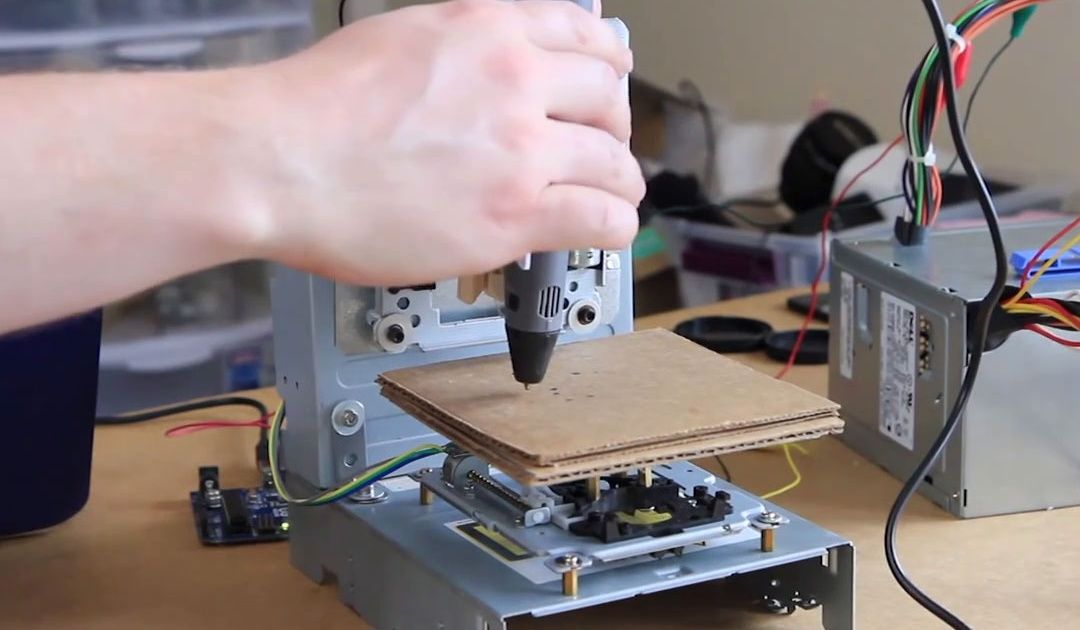
Gil Lavi, Founder & CEO, 3D Alliances
In the short term, I see more synergy between the following four areas:
-
3D printing software,
-
3D printers,
-
post-processing,
-
materials for 3D printing.
With increasing awareness and demand from industrial users to introduce additive technologies into manufacturing processes, solution providers are realizing the importance of building a single end-to-end workflow. Therefore, in 2022, I look forward to greater collaboration between 3D printing hardware, software, and material suppliers to help users integrate 3D into manufacturing.
Another challenge, in my opinion, is to ensure that publicly traded 3D printing companies are valued on the stock exchange. Only a few of them will be able to achieve this only through high financial performance. Simply put, in the longer term, this industry will continue to evolve and push the boundaries, discovering new ways to transform analog and manual processes into digital ones.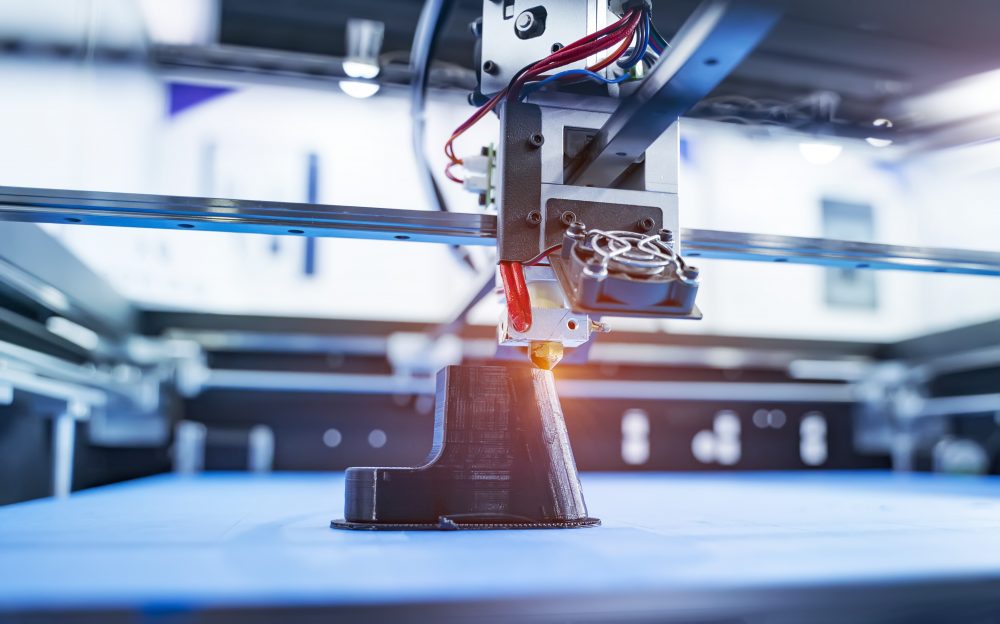
Rush LaSelle, Senior Director, Additive Manufacturing, Jabil
We look forward to further development of initiatives aimed at reducing production costs through 3D printing. The results obtained will help to prove that additive processes have significant advantages over traditional ones in relation to the manufacture of medium-sized batches and industries that are sensitive to price fluctuations. The main costs will be aimed at increasing the productivity of industrial 3D printers relative to capital investments. In addition, you need to focus on reducing labor and material costs, as well as reducing the time from design to delivery.
Reducing the cost of acquiring and operating 3D printers remains a critical factor for mass-produced businesses. As users seek to realize the benefits of additive manufacturing to increase production volumes, it is essential to be able to increase the productivity of printers. The use of more lasers in powder melting/sintering plants or higher layering speeds while improving print resolution will increase cost efficiency and investment attractiveness.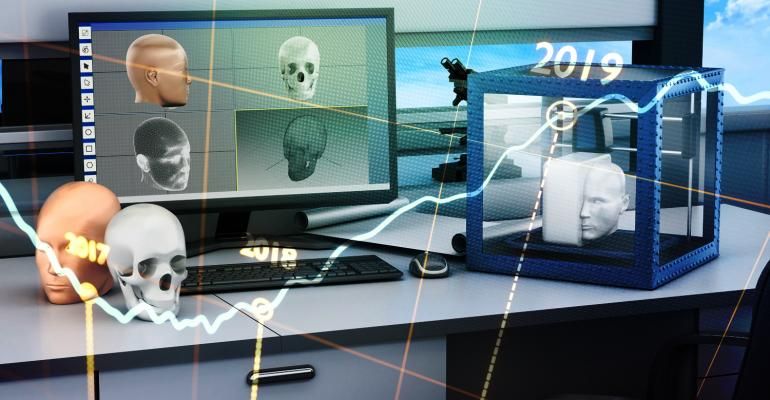
Dependence on a highly skilled workforce throughout the entire production cycle will continue to limit opportunities, despite the growing focus on workforce training and pre-production automation. The training of engineers, office and production staff, and the expansion of process automation will drive greater use of 3D printers beyond prototyping, combined manufacturing, and lucrative industries.
Supply chain issues for 3D printing will continue to drive the high cost of parts. This was partly by design, as vendors operate closed ecosystems to recoup investments in their own technology portfolios. Until recently, the volume of materials consumed by 3D printers was not high enough to interest the largest suppliers. Dynamics are expected to continue to change in the near future, with more equipment suppliers focusing on open system materials, while large polymer and metal suppliers will become more involved in the market, reducing powder and filament costs.
Source: 3dprintingindustry.
 com. Author: Michael Petch. The article is abbreviated
com. Author: Michael Petch. The article is abbreviated Article published on 17.02.2022, updated on 07.10.2022
what lies ahead for 3D printing
The prospects for 3D printing
Even now, the prospects for 3D printing are extremely promising. Scientists are actively developing existing 3D printing techniques, developing new technologies and types of materials, and finding new areas of application. Many call 3D printing the technology of the future, and for good reason. The technique is able to completely turn the usual way of life, changing the way most things are produced. In fact, a 3D printer is a real multifunctional factory, small and compact. Due to this, the future of 3D printing can definitely be called successful.
3D printers can significantly reduce production costs, thereby reducing the cost of products. Judging by the growing trend towards the popularization of 3D technologies, raw materials for 3D printing will become the main commodity unit in the future. In general, the prospects for 3D printing are defined for many areas. And now we will try to reveal them as much as possible.
In general, the prospects for 3D printing are defined for many areas. And now we will try to reveal them as much as possible.
The Future of 3D Printing
If you try to imagine the future of 3D printing, your imagination paints a rather interesting picture. Given the great interest of scientists in the 3D bioprinting technique, which is one of the most promising 3D printing technologies, the production of artificial organs on a 3D printer is not far off. It is also safe to say that the future of 3D printing will bring us dramatic changes in areas such as:
- Construction. 3D printing of houses, or contour construction, attracts many with its futurism and simplicity. The first steps in this direction have already been taken. The pioneers in 3D printing of houses were the Chinese, followed by the government of Dubai who discovered contour building. The first 3D printed office building has already been built in this city of the future, and an entire block is planned to be printed in the near future.
 And just recently, the first printed house in Europe was created on a 3D printer;
And just recently, the first printed house in Europe was created on a 3D printer; - Electronics. When listing the prospects for 3D printing, this point should be given special attention. Scientists believe 3D printing of electronics is the future of digital device manufacturing, and with good reason. Graphene properties and its application in additive manufacturing are currently being actively researched. A huge breakthrough in this area is the creation of a graphene battery with an unlimited service life on a 3D printer;
- Automotive and aerospace industry. The future of 3D printing is largely based on its ability to reproduce almost any element of varying complexity. In this regard, 3D printing is already widely used in the development of aircraft, machines and satellites. The ISS even has its own 3D printer, not to mention a number of successful 3D printing of cars.
- Pharmaceutical industry. Yes, yes, you can imagine. The future of 3D printing is in the manufacture of tablets and other medicines.
 This is confirmed by epilepsy pills legalized in the USA, made according to a special technique. The essence of this perspective of 3D printing is the gradual release of active substances, so that instead of many tablets, you can drink just one.
This is confirmed by epilepsy pills legalized in the USA, made according to a special technique. The essence of this perspective of 3D printing is the gradual release of active substances, so that instead of many tablets, you can drink just one. - Food industry. 3D food printers are gradually gaining space in cafes and restaurants. While this is probably one of the most raw 3D printing technologies out there, it has potential. Food 3D printers are especially interesting for the possibility of making food for astronauts, as well as the freedom to display culinary talent. This is confirmed by the amazing 3D-printed desserts of our compatriot.
Other questions and answers about 3D printers and 3D printing:
- Finance Which 3D printer manufacturers are best?
- Finance Which 3D printer is better to buy?
The future of 3D printers
Now let's try to imagine the future of 3D printers. There are several important points to be noted here. Below we list the most likely scenarios for the future of 3D printers.
Below we list the most likely scenarios for the future of 3D printers.
- Improving the reliability and quality of devices. Surely, many users are looking forward to this, because most of the existing models of 3D printers cannot boast of uninterrupted operation and the absence of printing errors;
- Large-scale distribution. It is certain that the future of 3D printers will please us with their popularization. Even now, one can observe a growing trend towards the use of 3D printing in almost all areas of industry. In parallel with the fact that more and more users learn about the possibilities of technology, the demand for desktop 3D printers is also growing;
- Availability. In continuation of the previous paragraph, it is worth noting that the growing demand for 3D printers will lead to lower prices for these devices. The use of 3D printing for domestic purposes is gaining momentum, which brings new equipment manufacturers to the market. Naturally, such a step will entail a reduction in the cost of devices;
- Enlargement of the construction area.
 3D printing of large-sized objects has long occupied the minds of developers. Of course, this applies to industrial 3D printers, because the functionality of 3D printing at this scale will allow you to create full-fledged components, for example, cars and aircraft;
3D printing of large-sized objects has long occupied the minds of developers. Of course, this applies to industrial 3D printers, because the functionality of 3D printing at this scale will allow you to create full-fledged components, for example, cars and aircraft; - Expanding the range of available materials. The future of 3D printers depends a lot on 3D printing materials, because more means more possibilities. The development of special equipment and related materials is being carried out by many companies, and news about the release of new polymers is constantly appearing.
3D technologies of the future
Summing up, it remains to consider only 3D technologies of the future. These include various futuristic scenarios that, to one degree or another, are already beginning to develop today. These include the technique of virtual reality, 3D scanning to create the perfect clothes and shoes, 3D printed makeup, and more. In a way, 3D technologies of the future also include bioprinting.